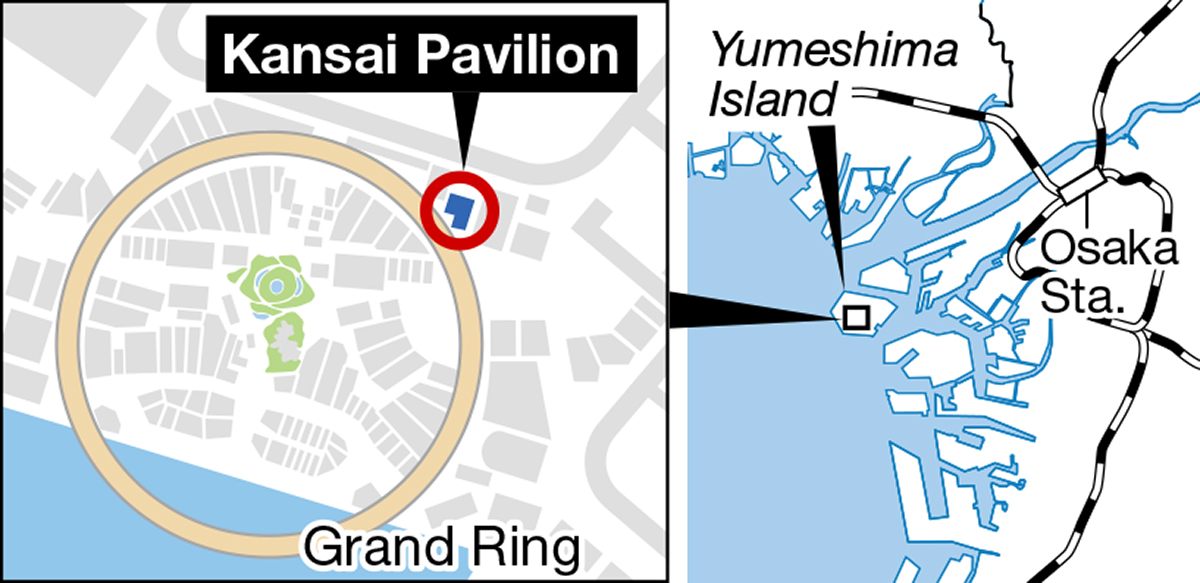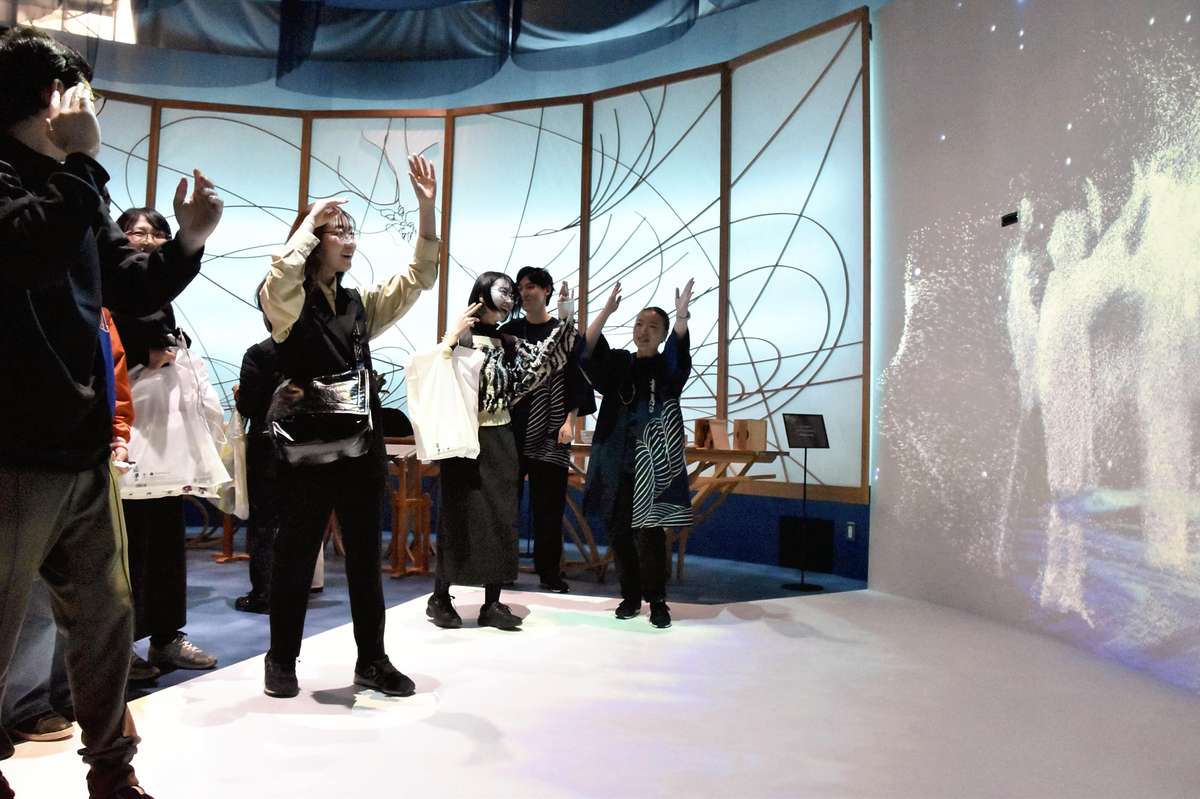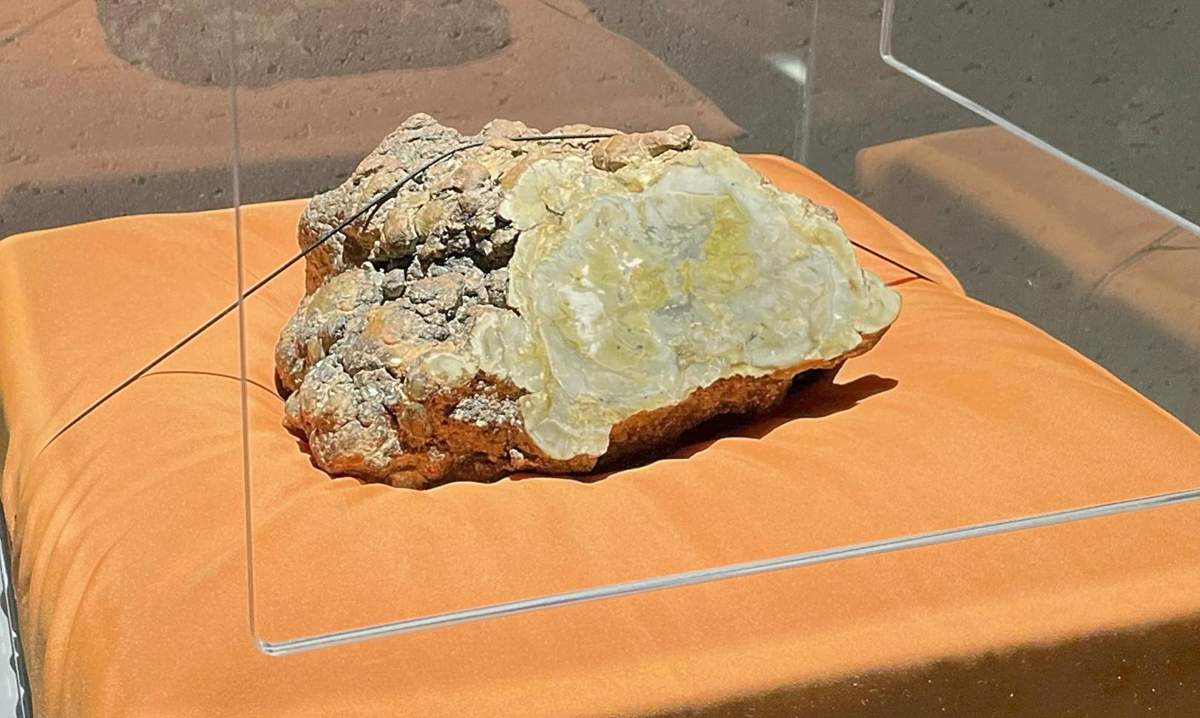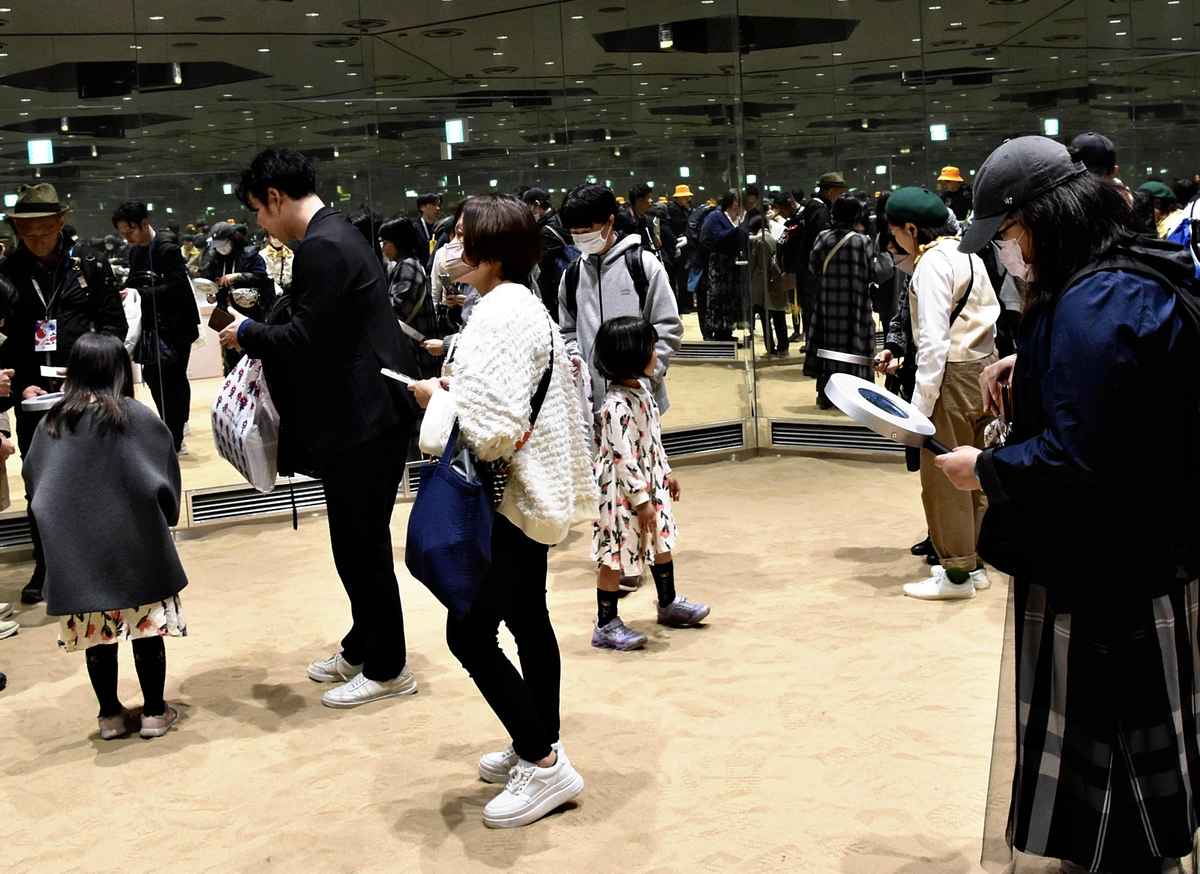 The Yomiuri Shimbun
The Yomiuri Shimbun
The Center Circle in the 2025 Osaka-Kansai Expo’s Kansai Pavilion on Yumeshima Island in Osaka
11:05 JST, April 26, 2025
OSAKA — The Kansai Pavilion, which features exhibits from nine prefectures in the Kansai region — Shiga, Kyoto, Hyogo, Nara, Wakayama, Tottori, Tokushima, Fukui and Mie — has attracted many visitors at the 2025 Osaka-Kansai Expo.
The pavilion, located in the East Gate Zone of the Expo, has the theme “The Brilliance of Kansai’s Rich History and Its Present Day.”
 The Yomiuri Shimbun
The Yomiuri Shimbun
 The Yomiuri Shimbun
The Yomiuri Shimbun
The Kansai Pavilion is seen from above.
The lantern-inspired hexagonal structure houses booths that introduce the prefectures through videos and interactive events.
On April 13, the opening day of the Expo, visitors viewed projections of the landscapes and food of each prefecture on a huge circular screen at the pavilion’s Center Circle, before proceeding to booths that interested them.
A huge screen in the Tokushima booth projects a video of a famous summer dance festival in Tokushima City called the Awa Odori. Watching the dance video, visitors were taught how to move their hands and feet to become instant performers of the local traditional art known as the “dancing fools.”
 The Yomiuri Shimbun
The Yomiuri Shimbun
The Tokushima booth, where visitors can experience the Awa Odori dance
Fukui Prefecture, which calls itself “Dinosaur Kingdom,” features virtual reality images of Fukuiraptor, whose fossils were excavated in the prefecture, and other dinosaurs on massive screens. Screens are installed in front, behind and on both sides of visitors, allowing them to experience dynamic images of dinosaurs on the attack, with realistic sound effects for their footsteps and roars.
 The Yomiuri Shimbun
The Yomiuri Shimbun
A video shows the rise and fall of dinosaurs in the Fukui booth.
 Courtesy of Fukui Prefecture
Courtesy of Fukui Prefecture
A dinosaur coprolite is on display at the Fukui booth.
Another highlight of the Fukui booth is the display of a dinosaur’s coprolite, an item from the Fukui Prefectural Dinosaur Museum’s collection. The fossil, which is 23 centimeters long and 14 centimeters wide, is believed to be from the Jurassic period (about 200 million to 145 million years ago) and was excavated in Utah. Visitors can touch it through the hole in the display case.
 The Yomiuri Shimbun
The Yomiuri Shimbun
Visitors use a special device to search for treasure in the area covered with sand from the Tottori Sand Dunes at the Tottori booth.
 The Yomiuri Shimbun
The Yomiuri Shimbun
Visitors walk through the Tunnel of Time at the Mie booth.
At the Mie booth, the 7.5-meter-long Tunnel of Time, which is made up of 400 mirror panels, offers visitors a fantastic visual experience of reflected light.
The Tottori booth features an area covered with sand from the Tottori Sand Dunes that is about 50 square meters and about 7 centimeters deep, re-creating the prefecture’s signature landscape. Visitors can search for items hidden in the sand with a device like a magnifying glass.
“I had only ever associated Kansai with Osaka and Kyoto, and I wasn’t familiar with rest of the area,” a 41-year-old Tokyo woman said. “But I learned that each prefecture has attractive natural scenery and festivals, making me want to visit there sometime.”
A 60-year-old Osaka man said he spent 2½ hours getting around all the exhibits in the pavilion.
“I was surprised with the smoothness of the sand from the dunes in the Tottori booth and rediscovered the beauty of Hikone Castle in the Shiga booth,” he said. “Even in regions I have visited, I learned about many interesting things that I had not noticed.”


AloJapan.com